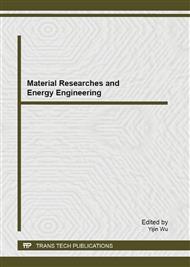p.246
p.252
p.258
p.264
p.270
p.275
p.281
p.287
p.292
Study of a Novel High-Strength Antibacterial Dental GIC Restorative
Abstract:
We have developed a novel high-strength antibacterial dental glass-ionomer cement (GIC). The functional quaternary ammonium salt (QAS)-constructed polymer (PQAS) was synthesized, characterized and formulated into the experimental high-strength cements. Compressive strength (CS) and S. mutans viability were used to evaluate the mechanical strength and antibacterial activity of the formed cements. Fuji II LC cement was used as control. The specimens were conditioned in distilled water at 37 °C for 24 h prior to testing. All the PQAS-containing cements showed a significant antibacterial activity, accompanying with an initial CS reduction. Increasing chain length, loading, grafting ratio significantly enhanced antibacterial activity but reduced the initial CS. Under the same substitute chain length, the cements containing QAS bromide were found to be more antibacterial than those containing QAS chloride although the CS values of the cements were not statistically different from each other, suggesting that we can use QAS bromide directly without converting bromide to chloride. The experimental cement showed less CS reduction and higher antibacterial activity than Fuji II LC. The long-term aging study suggests that the cements may have a long-lasting antibacterial function.
Info:
Periodical:
Pages:
270-274
Citation:
Online since:
September 2013
Authors:
Keywords:
Price:
Сopyright:
© 2013 Trans Tech Publications Ltd. All Rights Reserved
Share:
Citation:


